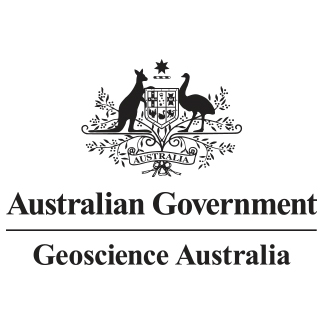Full description
The Australian Coastal Sediment Compartment data package consists of seven separate spatial data sets (2 point and 5 polygon) produced as a result of a 2012 technical workshop in which a panel of coastal science experts compartmentalised the Australian coastal zone. The three broad-scale polygon data layers - Coastal Realms, Regions and Divisions - capture high-level environmental attributes and information, and were developed as an informal hierarchy. These three data sets are supplied as they provide context and a logical sequence for the development of the compartments. With regards to spatial scale, a hierarchical listing for data sets is given below:- Coastal Realms (1:5 000 000)
- Coastal Regions (1:1 000 000)
- Coastal Divisions (1:250 000)
- Primary Compartments and Points (1:250 000 - 1:100 000)
- Secondary Compartments and Points (1:100 000 - 1:25 000)
The Primary and Secondary Coastal Sediment Compartment (and Point) data sets represent a regional (1:250 000 - 1:100 000) and sub-regional (1:100 000 - 1:25 000) scale compartmentalisation of the Australian coastal zone into spatial units within (and between) which sediment movement processes are considered to be significant at scales relevant to coastal management. The Primary and Secondary Point data sets were generated and attributed using expert panel knowledge of coastal geomorphology and processes, and represent compartment boundaries along the coast at the respective scales. Environmental attributes used to determine the location of compartment (point) boundaries are given in priority order below.
1 - Gross lithological/geological changes (e.g. transition from sedimentary to igneous rocks).
2 - Geomorphic (topographic) features characterising a compartment boundary (often bedrock-controlled) (e.g. peninsulas, headlands, cliffs).
3 - Dominant landform types (e.g. large cuspate foreland, tombolos and extensive sandy beaches versus headland-bound pocket beaches).
4 - Changes in the orientation (aspect) of the shoreline.
Once generated, the compartment boundary point data were used in conjunction with a number of other input data sets to generate the Primary and Secondary Compartments.
Use Limitations:
The Realm, Region and Division data sets are interim products used to establish a context for the development of the Primary and Secondary points and compartments. There is no formal topological relationship between the Realm, Region and Division data sets. An informal hierarchical (not topological) relationship does exist between the Primary compartments and the Divisions, as seen in the Primary compartment attribute field `ID_Primary. The Primary and Secondary compartments do share a formal topological relationship, and also a formal hierarchical relationships, as shown in the Secondary compartment attribute field `ID_Secondary.
Primary compartments are intended to be representative at a spatial scale of 1:250 000 - 1:100 000 while secondary compartments are intended to be representative at scales from 1:100 000 - 1:25 000.
IT IS IMPORTANT TO NOTE THAT THE COMPARTMENT POLYGON DATA IS NOT ATTRIBUTED WITH ENVIRONMENTAL DATA - ONLY THE PRIMARY AND SECONDARY POINT DATA SETS CONTAIN SUCH ATTRIBUTE DATA.
Lineage
Maintenance and Update Frequency: asNeededIssued: 2015
text: westlimit=111; southlimit=-45; eastlimit=155; northlimit=-9
User Contributed Tags
Login to tag this record with meaningful keywords to make it easier to discover
Download the map (Primary Coastal Sediment Compartments)
uri :
https://d28rz98at9flks.cloudfront.net/87838/87838PrimaryCompartments.jpg![]()
Download the map (Secondary Coastal Sediment Compartments)
uri :
https://d28rz98at9flks.cloudfront.net/87838/87838SecondaryCompartments.jpg![]()
Related product: The Australian Coastal Sediment Compartments Project: Methodology and Product Development
uri :
https://pid.geoscience.gov.au/dataset/ga/84574![]()
Download the data (ESRI shape file)
uri :
https://d28rz98at9flks.cloudfront.net/87838/Shapefiles_v3.zip![]()
Download the data (ESRI file geodatabase)
uri :
https://d28rz98at9flks.cloudfront.net/87838/CoastalCompartments_v3.gdb.zip![]()
Download the data (Google kmz)
uri :
https://d28rz98at9flks.cloudfront.net/87838/GoogleEarth_v2.zip![]()
Related product: Australian Coastal Sediment Compartments ESRI Mapserver
uri :
https://pid.geoscience.gov.au/dataset/ga/90088![]()
Related product: Australian Coastal Sediment Compartments WMS
uri :
https://pid.geoscience.gov.au/dataset/ga/90089![]()
Related product: Australian Coastal Sediment Compartments WFS
- DOI : 10.4225/25/56171AF00B6C5

- Local : pid.geoscience.gov.au/dataset/ga/87838
- global : 21a23d9a-00dd-ab19-e053-10a3070a2746


